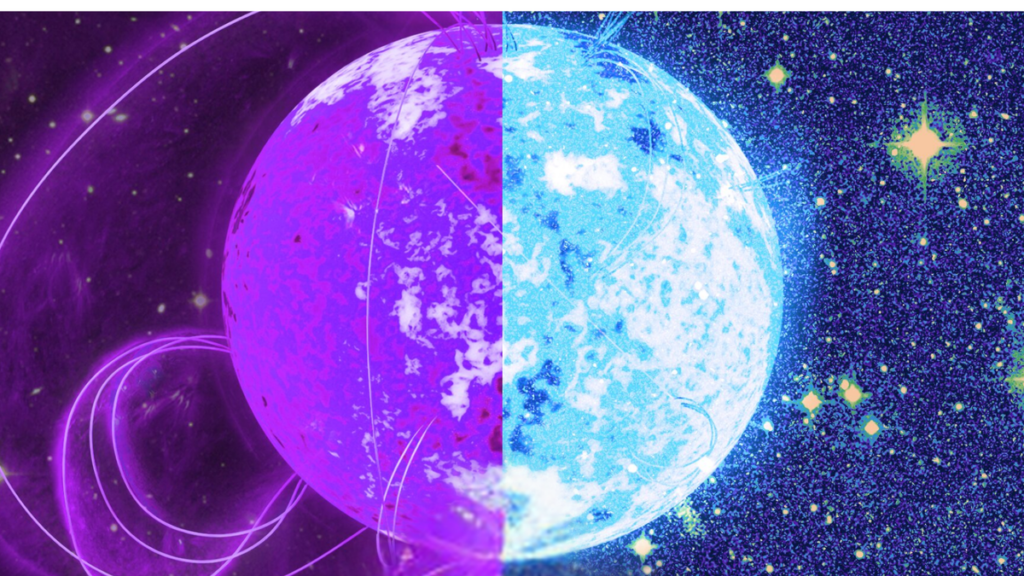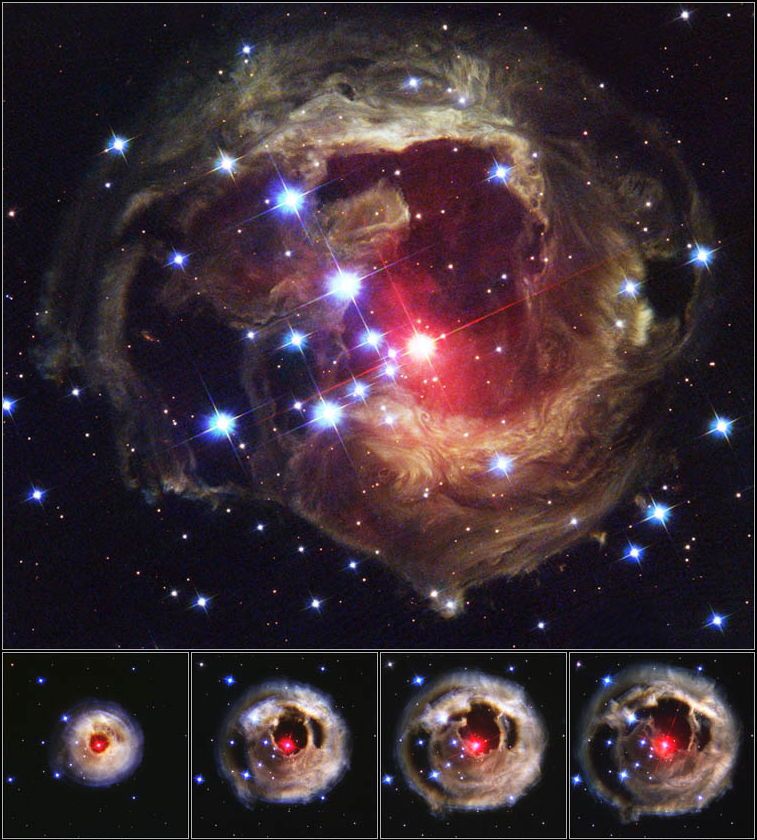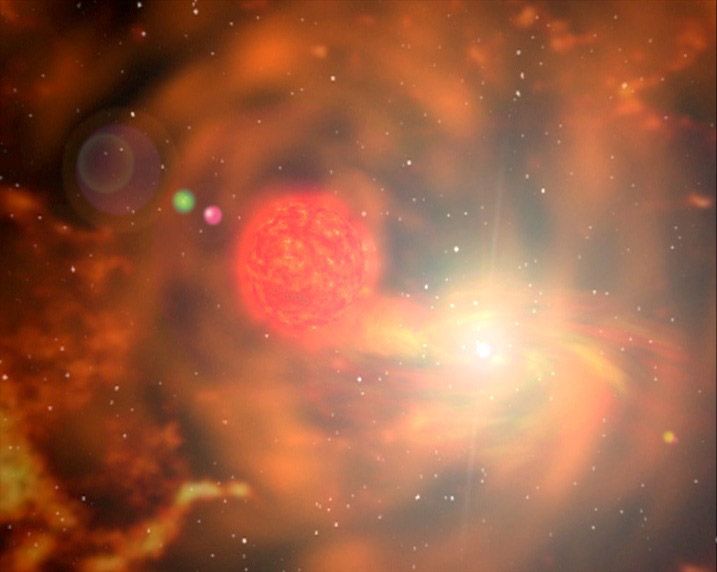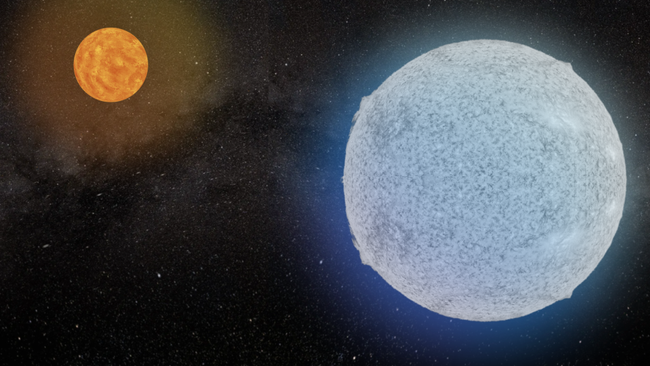Did a Star Avoid Cannibalism by Escaping Its Deceased ‘Monster’ White Dwarf Companion?
Is this lurking dead star a neutron star or a monstrous white dwarf?
New observations have questioned the type of a remote ‘‘dormant’ quiescent star in a binary system with a ‘‘hot’ active counterpart. Now there are theories that state that this may be a supermassive white dwarf instead of the neutron star.
This discovery makes one wonder how the system’s ‘alive’ star has been able to stay on the proximity of such a massive stellar remnant without being pulled in much less devoured by it. The study is explained in detail on the pre print server ArXiv. of collection for the Remotely sensed org and has been published in the Open Journal of Astrophysics.
A star 417 light years from the Earth with a somewhat enigmatic companion which was first supposed to be a neutron star was discovered in 2023. The system is called LAMOST J2354 after the Large Sky Area Multi-Object Fiber Spectroscopic Telescope that conducted the discovery. There has been more recent theories as to the identity of the ‘dead star’, claiming that it may actually in fact be an oversized white dwarf.
“Well, the so-called J2354 system was first believed to contain a neutron star,” said the study’s leader, Michael A. Tucker, a researcher from the OSU’s Center for Cosmology and Astroparticle Physics. I liked this system because if the it was a neutron star, it has probably formed through the core-collapse supernova.
Tucker had mentioned that the explosion of the massive star, which was to have evolved into the neutron star, ought to have retained a remnant of the metals on the companion star. The system is fairly young and luminous – ideal for identifying such a supernova and its remnants Were were unsuccessful in finding such ‘contamination’, which let us discard the neutron star in favor of the white dwarf.
White dwarf or neutron star: What’s the difference?
As much of a contrast as similarities there are between both white dwarfs and neutron stars, they both are dense, compact remnants.
They both are formed at the last stage of stellar evolution of stars; when the stars themselves are unable to burn their nuclear fuel to balance the force of gravity. This leads to the stunning of the star and thus forms an ultra-dense core that cannot again collapse due to quantum mechanics where two particles are not allowed to occupy the same space.
The white dwarfs are formed when the stars of mass close to the sun exhaust the hydrogen in their cores. About 5 billion years later, our Sun will do the same and leave a white dwarf as the last star constituent in what will remain of the solar system.
However, stars with about eight times the mass as the sun, follow a different process altogether. These greater mass stars when they exhaust their hydrogen fuel, the core’s contraction rise adequate pressure and temperature to ignite helium, transforming elements up to iron. Since iron cannot be fused into heavier elements, the star goes for a supernova explosion if it crosses the Chandrasekhar limit which is around 1. Yes, Jupiter is 318 times larger than the size of the Sun, that is 4 times that of the Sun. This leads to the creation of a neutron star, stellar remnant that condenses between one and two solar masses, into a volume not very different from New York City.

The original classification of the terminated stellar partner in the LAMOST J2354 binary system was derived from the assumption that this object has a neutron-star mass close to the Chandrasekhar limit.
The problem is that the mass region of ‘massive’ white dwarfs coincides with the mass region of ‘light’ neutron stars, said Tucker. “Thus it seems that even if the mass is known in detail it still does not make it possible to confirm if the hidden companion is a white dwarf or a neutron star. ”
In addition, the team revealed hints that might indicate that what is buried in LAMOST J2354 was not a neutron star at all. One was that there is no pollution around the living star, or the debris which should reach the living star when a massive star dies and a neutron star is formed.
This pollution could be missing if the companion star was further from the supernova explosion, however Tucker points out that, for the neutron star to have been “kicked” in to its present orbit such a scenario would need an extremely aligned kick direction and velocity. ‘As orbits are typically larger after a supernova due to the removal of mass from the system achieving a closer orbit would be a highly unlikely occurrence that would only happen with a few per cent probability,’ Tucker said.

The next nearest known system of a LAMOST J2354 is the binary system comprising an ordinary star orbiting a neutron star and if it were such a system it would be twice as close to Earth as the present system. This would mean that systems like this are eight times more frequent in the Milky Way than currently projected. Hence current models increases the odds of defining a 1. LAMOST J2354 has been deduced to be 4 solar mass white dwarf.
‘So while it is not one of the largest observed white dwarfs, the newfound star is quite large by anybody’s standard,’ said Tucker. ”As a rule, the greater the mass of a white dwarf is, the less it can be traced.
This is due to a fact that in white dwarfs the size reduces with the increase in mass. Therefore, more massive white dwarfs are less in size as well as lower luminosity than less massive white dwarfs.
Tucker further said that the larger white dwarfs cool more rapidly, due to increased density that promotes thermal conduction. This helps the energy to conduct from the central region to the outside and thus be freed. Therefore, more massive white dwarfs are not only less in size and temperature but are also much less luminous than lower mass white dwarfs of the same age, he added.
Skipping over the details of ‘how the star traded the snug rhythms of partnered dance for space with its lurking ‘zombie’ companion?
From Tucker’s observation, the most interesting fact about LAMOST J2354 is its evolution.
“The current orbit is very close — approximately 1. 5 times the diameter of the Sun — which means that the system has experienced at least one CE event,” he pointed out.
The ‘common envelope’ phase is a stage in the life cycle of binary star systems, the first star of which exhausts its hydrogen core and thus expands to become a red giant. If the stars in the binary system are less than 500 times the Suns diameter apart the companion star is engulfed in the red giant’s enlarged outer layers hence the term common envelope.
“During this phase, the drag and friction cause the orbit to slowly to decrease while the envelope is ejected from the system During this phase, the drag and friction cause the orbit to slowly to decrease while the envelope is ejected from the system Since this is an essential phase in the evolution of binary stars, modeling this phase is very challenging due to the large time and space scales involved” Tucker concluded. “The end result is that the binary has become closer system, and the more massive star has shed most of its envelope, and what remains is a ‘helium star’ or ‘sub-dwarf. ’”

In the case of low-mass primary stars, less than three times the Sun’s mass, helium fuses to carbon and oxygen in the core before the system evolves to a normal star and a ‘regular’ white-dwarf binary, according to Tucker.
“On the other hand, for more massive primaries, which are greater than three times the mass of the Sun, the helium can only burn in a shell around the carbon or oxygen core”, he said. ”This leads to a second massive phase in which the stars can swell to several hundred times the size of the sun and undergo a second common envelope phase, this process also shrinks the orbit and leads to the expulsion of the primary star’s envelope. ”
The specific question the team is investigating is how in these kinds of systems a low-mass companion crosses two common-envelope phases and does not merge with the primary white dwarf star.
Tucker asked, “We know that binaries usually merge as the majority of the most massive white dwarfs that are still rapidly rotating suggest past mergers So how or why did this system avoid merging?” This idea was formally presented to binary-star theorists to challenge the theoretical effects of common-envelope evolution in close binaries.
Today, although the team’s discovery suggests that a huge white dwarf could be in the system, a neutron star’s existence in the system cannot be completely rejected.
‘To conclusively solve the question and rule out the presence of a white dwarf for the companion definitive indication of its ultraviolet spectrum is the best way,’ said Tucker. “Unfortunately this takes time on the Hubble Space Telescope which is becoming harder and harder to gain, we submitted a proposal for this target last year and it was turned down so that is why we published as we have done. We will apply again in future cycles, but Hubble is showing signs of ageing and degradation. ”
Thus, it may take considerable time before astronomers will be able to determine whether the dead star in LAMOST J2354 is a neutron star or a rather massive white dwarf.
The team’s research is published on the paper repository arXiv.
Do not forget to share your opinion with us to provide you with the best posts !




0 Comments